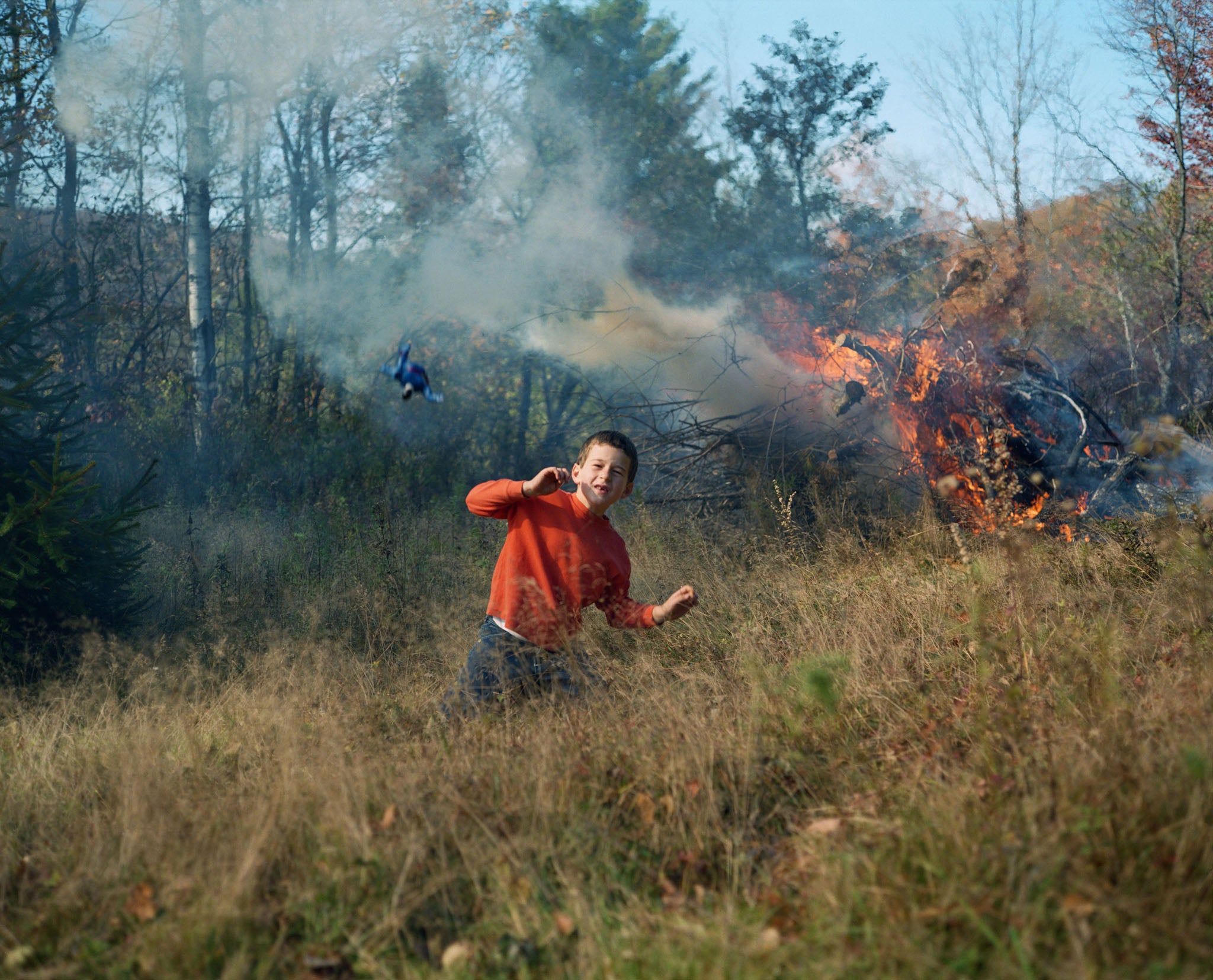Philip-Lorca diCorcia photographs, review: Profoundly moving pictures of the everyday
The Hepworth Wakefield

Photographs by American photographer Philip-Lorca diCorcia feel like an out of body experience, as though you’re floating above your own life and seeing fresh the banality of every day. He humanises people you’ve ignored, or never thought about. His pictures are profoundly moving.
Not that they’re entirely real. He’s the master of set up. His famous Hustler series is an ambiguous fiction of real life Los Angeles rent boys posing in hotel bedrooms or on the street. They’re staged but the characters are real, and were paid for their time. What’s striking about these images, made in the early 1990s, is how feminised the young men’s poses are. They’re passive, patient and sexy. Waiting, in bedrooms or on streets, to be chosen by a man with a bulging wallet.
DiCorcia has an eye for the fallen. In "Lucky 13" pole dancers pose upside down, perfectly lit lines of muscle along their thighs and taught stomachs. "Juliet Ms Muse, 2004" is as sexy as a downbeat Marilyn Monroe. Her life seems as precarious as her pose, hanging from a pole by her feet. She hustles for cash by doing private lap dances. The near life size of the image makes her both brazen and vulnerable.
Philip-Lorca diCorcia photographs
Show all 5A man wearing a suit falls to the ground in New York, 1984, and scrabbles for his spectacles, which lay near his copy of the New York Times. He bears the insignia of power – suit, broadsheet, tortoise-shell spectacles – but is helpless on his knees. This staged photograph forms part of a series: A Storybook Life, 1975-99 which is a collection of pictures that look like documentary snapshots but were all carefully set up. The way diCorcia exposed photography’s fiction was at odds with documentary work by contemporaries such as Nan Goldin.
It’s hard sometimes to work out why diCorcia’s photographs are so visually compelling. "Los Angeles 1980", is of a man holding a beer can and sitting on a flocked sofa with a dog. The man’s not obviously good looking although the dog is. Dirty dishes lay stacked on a side table, along with a can of Budweiser - signifying America. DiCorcia is masterful with colour and composition, but there’s something inexplicable. It’s like charisma or sexiness, difficult to define.
His most recent series East of Eden deals again with the fallen. The title comes from John Steinbeck’s epic novel: inspired by the story of Cane and Abel. For diCorcia, Adam and Eve’s expulsion from Paradise becomes a metaphor for the America’s economic crisis since 2008 – a fall from grace, loss of innocence, greed. The pictures are united by theme but not what they depict. A glowing blonde woman – Eve - stands behind a monumental tree. A modern day cowboy rides through pristine American landscape, and a blind couple, Lynn and Shirley, stand together in low light in their house, like Adam and Eve after their fall.
The museum refers to diCorcia as one of America’s greatest photographer, and for once it does not feel like puff.
Philip-Lorca diCorcia, Photographs 1975-2912 is at The Hepworth Wakefield to 1 June
Subscribe to Independent Premium to bookmark this article
Want to bookmark your favourite articles and stories to read or reference later? Start your Independent Premium subscription today.

Join our commenting forum
Join thought-provoking conversations, follow other Independent readers and see their replies